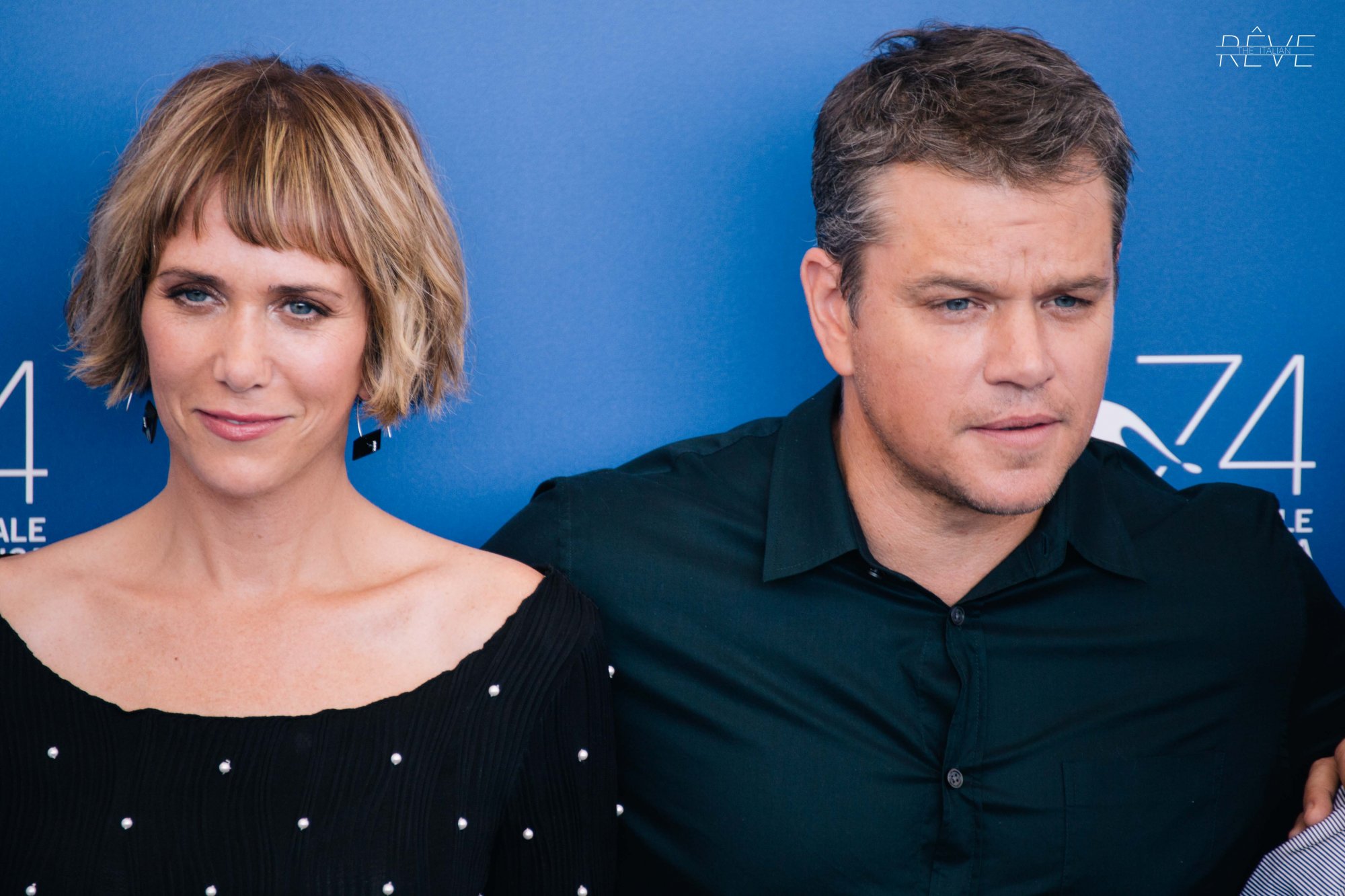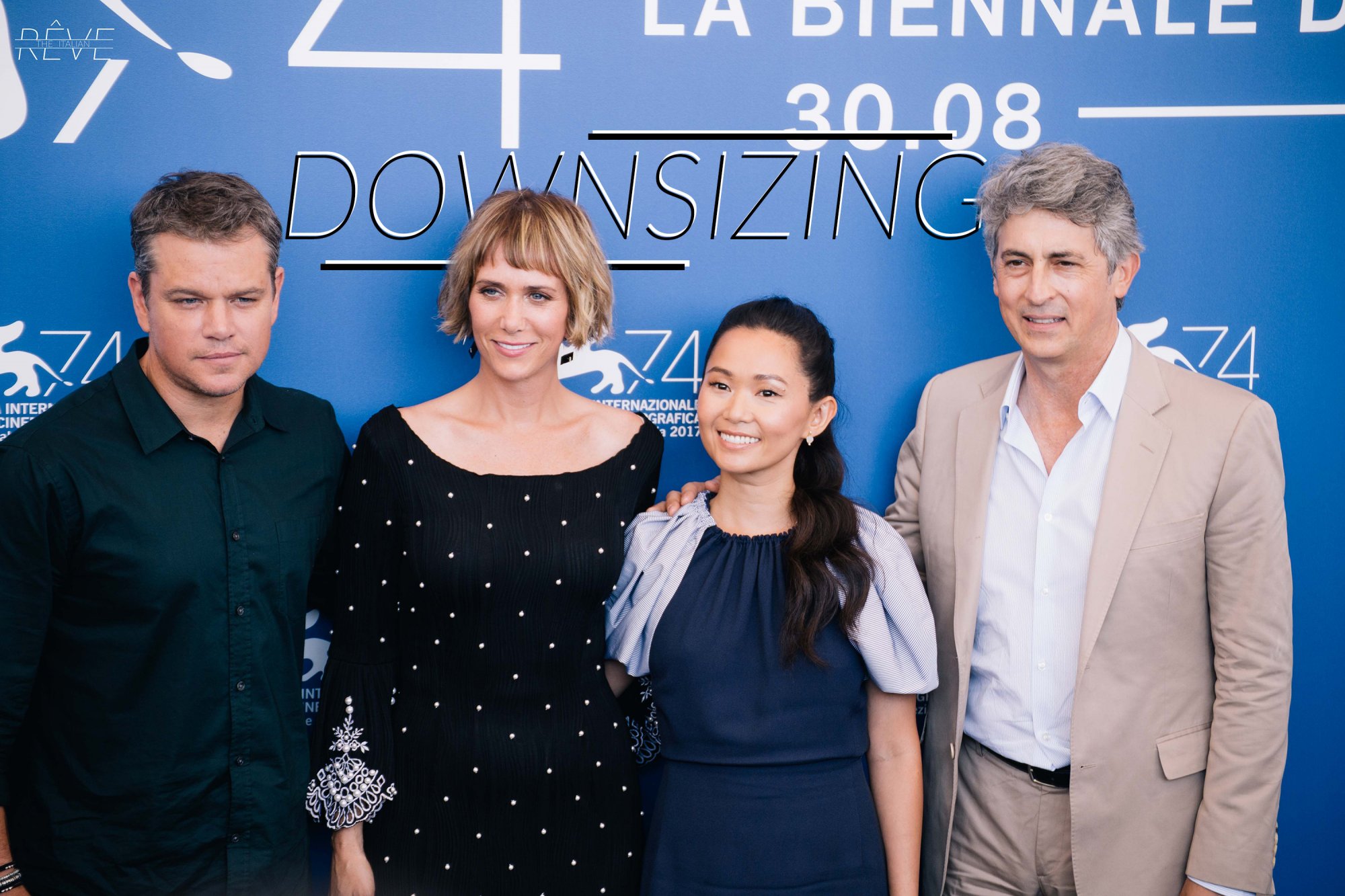Have you ever thought of how life would be if you were to be downsized? Squeeze your body into a tiny, 12 centimeters-tall version of your usual self? Having at your command a world of luxury, at the small price of losing your size, and helping the Planet in the process? Yes or no?
How many would go for this choice, albeit irreversible, and how many would be too scared to see it through?
How life could change? How collectivity would change, despite everything, despite all we know?
That’s just a number of the whole lot of questions that Downsizing asks its audience.
And, no: by the end of the movie, there will be no right, unquestionable answer.

Matt Damon is Paul Safranek, a man with a stable yet uneventful life. He’s always lived in the same house he was born in, first with his mother and then with his wife, never really accomplishing anything above the ordinary. He’s married to Audrey Safranek (Kristen Wiig) and they’re not happy; the couple would happily buy a new house, but that takes money and the Safraneks are average, with debts to the roof and no possibility of living as they desire. When Paul and his wife decide to shriek themselves, it seems to be the only possible way to escape reality: small people have better houses, earns a lot and easily, enjoy minimum waste and a lot of free time and comforts. Who wouldn’t sign up for something like this?
Well, did we mention that never, ever, Paul’s life goes like he plans?

His wife crushes under the pressure and things go south for Paul.
Be it out of fear, or pure egoism and cowardice (because yes, Audrey may be considered as a negative character) Paul wakes up alone. His wife has abandoned him and ran away, without even saying sorry, without thinking of talking it through before letting him go down the project of downsizing alone. Now Paul, 12 cm of deep desperation, needs to adjust to his new rich, solitary, small life.

Things change when he meets his neighbour (Christoph Waltz, always irresistible and funny). Prompted by a wild party, Paul gets to know Gong Jiang (Hong Chau). Gong Jiang is bossy and straightforward, but she is also selfless, kind and devoted to helping others. Thanks to her, Paul will understand to see things in a different way; and that love can come also for small people, and it can be gigantic.

The film was produced by three colleagues who have previously worked elbow-to-elbow: Alexander Payne (Nebraska, Election), Jim Taylor and Mark Johnson. Although the movie seems to have innovative bases Taylor declared that this work has the same pillars of any other of his movies: sense of humor and a great challenge, only with a Sci-Fi premise. At the movie, Stefania Cella collaborated as production designer: she worked alongside with Sorrentino in La Grande Bellezza, and is currently working with him on a Movie about Italian former “Presidente del Consiglio” (prime minister) and businessman Silvio Berlusconi. She had almost total creative freedom, but she was supposed to make the “downsizing machine” look like a giant microwave. Well, she did.
And really, who wouldn’t want a giant microwave that can downsize people?

Downsizing is, first of all and above all, a love story. It’s funny, optimistic and sometimes predictable, such as every other love story. But, somehow, it’s message it’s bigger than that.
For the character of Gong Jiang, Hong Chau underwent therapy and simulations of living as a below-the-knee amputee. She lived, talked and experienced all the things a physical therapist and an amputee has to experience, in order to create authenticity. However, Gong Jiang was not supposed to be 100% authentic: the actress was so good in portraying her character as multi dimensional, reliable, and yet in perfect synchro with all the other themes of the movie. Hong Chau’s character lives in harmony with the narrative flow, creating the perfect heroine for this kind of story.
Matt Demon’s Paul Safranek is not a hero. Gong Jiang is.

The other majestic, unspoken characters in Downsizing are Earth and Science. The first is struggling to keep up with all the resources humankind is wasting, often for nothing but raw greed, the second might come out helpful. Downsized people seems to be the only affordable solution to save our dying planet, which we’re suffocating under peaks of wastage and pollution. Sadly, statistics say that the human race is doomed: the world will purge itself by wiping humanity, its unresentful killer, away. Downsizing is a solution that came too late and barely developed. The heavy themes of this movie are unquestionable, but they blend perfectly with the humoristic and romantic scenes.
Downsizing is considered a social satire, with the premises of a sci-fi and an attention to reality that lies in the humanitarian, environmental aspect of the story.
Director Alexander Payne declared that he and his colleagues, in making the movie, only partially cared about making the “downsizing” credible: the movie is not about making people chose to shrink themselves in order to save the planet.
It’s a love story, a funny one, a realistic one when it comes to feelings and human reactions.

The movie has been presented at the 74 Venice International Film Festival during the opening day, following a press conference with the productors and main protagonists, and is set to be released by Paramount Pictures in December.
It is yet to see this year, too, if Downsizing will place itself as a competitor for the Academy Award, such as many movies that opened the International Venice Film Festival.
All we ask now is: will Downsizing keep up with the tradition?





